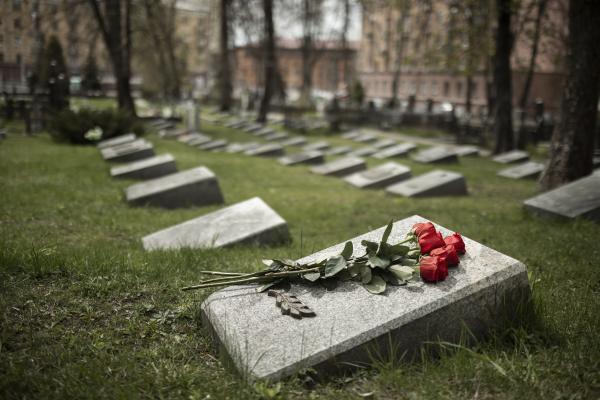
Everything you need to know about embalming a body: process, duration and costs
What does it mean to embalm a body and what does the process involve? At Áltima we explain the entire process step by step, as well as other details such as the cost and the time it takes to embalm a body.
What is embalming and why is it carried out?
Embalming consists of sanitising and preserving the internal tissues of the body of a deceased person.
Through the application of various techniques, the introduction of chemical substances and the extraction of biological fluids, it is possible to temporarily halt the progress of the natural processes of deterioration that begin in the body once death has occurred. (Decomposition).
It is a very ancient method of preservation which dates back to Ancient Egypt. The process allows the body of the deceased person to be kept in optimal hygienic and aesthetic condition for a prolonged period of time. However, in modern times, the reasons and techniques for embalming have changed and evolved.
Nowadays, embalming is considered a sanitary practice, regulated by the laws of Mortuary Sanitary Police, and must be applied in certain cases depending, for example, on the time that will elapse until the body's final disposal, or when it will arrive at its final destination.
It could also be said that the main reason why embalming is carried out is to preserve the body of the deceased person so, when relatives come to pay their respects at a wake, it is in good condition and it has health guarantees. Another reason why embalming should be carried out is when the deceased person has to be moved from one place to another and several days have passed since their death.
Embalming in Spain is obligatory:
-
If the burial or cremation cannot be carried out within 72 hours of the death of the deceased.
-
If the deceased person has a wake or is to be exposed in a public place for a period of more than 48 hours from the date of death.
-
If the deceased is to be transferred and/or repatriated.
In these cases, the body must be embalmed for health reasons.
Step by step process of embalming a body
Embalming is a delicate and complex process that must be carried out by qualified personnel. Let us look at the procedure in simplified form:
-
The related documentation is checked and reviewed, the deceased person is placed on a stainless steel table, the disinfection process of the body is carried out and a complete sanitisation of the body with soap and water is performed.
-
A preliminary analysis is carried out, carefully observing the signs shown on the body in order to determine which instruments are required and what kind of chemical solution is required, adapting it to the needs of the body.
-
The arterial injection site is located. The choice of artery will depend on each individual case.
-
The process of injecting the embalming solution begins. This contains, among other components, preservatives, biocides, anticoagulants and dyes.
It is essential to distribute the embalming solution by massaging with moisturising cream and to be aware of the changes that occur in the body at all times.
-
The blood is drained. This can be either cardiac or through the venous system.
-
Both processes are combined until the desired objective is achieved.
-
A final body wash is performed.
-
Any conditioning work that may be required is carried out.
The time it takes to complete the embalming process will depend on the needs of the deceased with each specific case being different.
Although embalming achieves a considerable improvement in the appearance of the deceased, it may also include cosmetic arrangements (thanatoaesthetics). The application of these make-up and hairdressing techniques will be adapted to the requests that the deceased's loved ones have passed on.
How long does an embalmed body last?
It should not be forgotten that embalming is a temporary preservation method and its duration will depend on many factors. Generally, the state of preservation can be maintained for several days, weeks or even months.
The length of time the embalmed body can remain in good condition may vary depending on different factors such as:
-
The state of the body. The pathologies and treatments prior to death, the time elapsed between death and embalming or the evolution of cadaveric phenomena are some important aspects to take into account in embalming.
-
Environmental conditions. The temperature and humidity of the environment in which the embalmed body is placed are key factors.
-
Time. The time between embalming and final destination of the body must be taken into account. During international repatriations, for example, the treatment should be adjusted accordingly.
-
Praxis. The skill, experience and judgement of the embalmer have a great deal to do with the effectiveness, outcome and duration of preservation.
In conclusion, although it is not possible to determine precisely how long an embalmed body lasts, we firmly believe that this sanitary practice is a method that requires extreme professionalism, experience and judgement in order to offer a satisfactory and dignified result to the deceased and their loved ones.


